Welcome back to Project 16:40. If you’re just discovering this series for the first time, here’s a quick recap.
Two years ago I set out to post new PBs on a whole bunch of local climbs. It went really well, but I missed out on a PB on the most important of all Melbourne climbs: the 1 in 20.
Project 16:40 is my attempt to train up for and post a new PB on the 1 in 20; a time of 16:40 or faster.
If I’m going to achieve that goal, I’ll need to be smart about it. I know I have a tendency to go out too hard on the climb, meaning I pay for it in the closing kilometres. To set a new best, I’ll need to get my pacing just right.
You see, you can’t just ride to a constant power if you want to get the best out of yourself on the 1 in 20. The ascent features two sections of sustained climbing but they’re separated by a false-flat, which means managing your effort is a bit trickier than on a more consistent climb.

I’ll be working on my pacing out on the road in the weeks and months ahead, but I can start my preparation here at home beforehand. Thanks to the magic of Strava, I can break down my previous best efforts on the 1 in 20 and use them as a guide for how to pace myself in future attempts.
My assumption here is that my previous PBs – and especially my current PB – are examples of where I got the pacing ‘right’. Or at least, right enough that I was able to set a new PB, which is ultimately the goal of this project.
To broaden things out a little, and to provide a little more context, I’ve opted for a slightly larger dataset than just the three 1 in 20 PBs I have recorded on Strava. I’ve grabbed the 10 best times I’ve ever done on the 1 in 20 and used them as the basis for this analysis.
(Note that I’ve used this particular Strava segment for my analysis and indeed for this project overall, as it’s the segment most people seem to use. In the past I’ve used the Strava segment for the old Cycle2max version of the climb, which is slightly longer.)
Here are my 10 best efforts on the 1 in 20, in chronological order, with PBs in bold:
| Date | Climb time | Note |
| Dec 11, 2011 | 18:31 | PB at the time. Previous best was 19:30, in 2009. |
| May 25, 2013 | 17:36 | PB at the time. |
| April 27, 2014 | 17:49 | Just a random attempt. |
| April 3, 2016 | 16:41 | My current PB. |
| Feb 16, 2020 | 18:07 | A training ride in prep for the PBs Project attempt. |
| March 7, 2020 | 17:05 | Attempt #1 for my PBs Project. |
| April 10, 2020 | 17:28 | Attempt #2 for my PBs Project. |
| April 18, 2020 | 17:56 | Attempt #3 for my PBs Project. |
| April 2, 2021 | 17:50 | Just a random crack. |
| Jan 22, 2022 | 18:38 | My Project 16:40 benchmark ride a few weeks back. |
To best analyse my pacing on the 1 in 20, I think it’s best to break the climb down into its three constituent parts:
- Part 1: A 3.3km section of sustained climbing.
- Part 2: A 1.1km false-flat of negligible gradient.
- Part 3: A 2.3km section of sustained climbing.
For my 10 best efforts on the 1 in 20, I worked out the time I spent in each of the climb’s three sections. In the table below I’ve arranged the 10 efforts in order of completion time. Efforts in bold were PBs at the time so my pacing was presumably best in those efforts.
| Climb time | First part (3.3 km) | False-flat (1.1 km) | Last climbing (2.3 km) |
| 16:41 | 8:40 | 2:12 | 5:49 |
| 17:05 | 8:50 | 2:10 | 6:05 |
| 17:28 | 8:50 | 2:18 | 6:20 |
| 17:36 | 9:15 | 2:08 | 6:13 |
| 17:49 | 9:23 | 2:08 | 6:18 |
| 17:50 | 8:59 | 2:13 | 6:38 |
| 17:56 | 9:05 | 2:11 | 6:40 |
| 18:07 | 9:26 | 2:04 | 6:37 |
| 18:31 | 9:42 | 2:18 | 6:31 |
| 18:38 | 9:39 | 2:19 | 6:40 |
So what we can learn from these numbers? The first thing that jumps out at me is that my fastest effort overall (at the top of the list) wasn’t the fastest I’ve ridden the false-flat. In fact, I rode the false-flat faster than my PB on five of a possible nine other occasions.
This tells me that going hard on the false-fast is probably less important than I realised. Until now I thought it was important to give it everything when the road flattened off (within reason) but it seems like holding back a little might be a better strategy.
It makes sense. As I’ve written before, the flatter the road, the more of your power goes into fighting the wind. As the gradient increases though, the more “value” you get for your power. That is, more power uphill = more speed. So I’m better off saving my bickies for the climbing sections.
Here’s something else that’s interesting from the table above. In my best-ever effort, I covered the first part of the climb 10 seconds faster than in any other effort, but I was 16 seconds faster in the final part than in any other effort. This is significant. Let’s put the times above into percentages to show why.
The table below shows the percentage of a given effort I spent in each of the three parts of the climb. These numbers are approximate – you’ll notice that they sometimes don’t add up to 100%, due to rounding etc. Again, the times in bold were PBs at the time.
| Climb time | First part (3.3 km) | False-flat (1.1 km) | Last climbing (2.3 km) |
| 16:41 | 51.9% | 13.2% | 34.9% |
| 17:05 | 51.7% | 12.7% | 35.6% |
| 17:28 | 50.6% | 13.2% | 36.3% |
| 17:36 | 52.6% | 12.1% | 35.3% |
| 17:49 | 52.7% | 12% | 35.4% |
| 17:50 | 50.4% | 12.4% | 37.2% |
| 17:56 | 50.7% | 12.2% | 37.2% |
| 18:07 | 52.1% | 11.4% | 36.5% |
| 18:31 | 52.4% | 12.4% | 35.2% |
| 18:38 | 51.8% | 12.4% | 35.8% |
So what do these percentages tell us about those 10-second and 16-second time gaps I managed during my current PB? Well, that 10-second gap in the first section was built over roughly half of the climb, whereas the 16-second gap in the final section was built in only around 35% of the climb.
To me this says that if I pace my effort well – again taking my best-ever effort as an example of good-enough pacing – then there are gains to be had in that final section. And the data seem to confirm this. Of the 10 efforts in this list, the three with the lowest percentage of time spent in the final section are all PBs.
The data also seem to show what happens in the opposite case. In the efforts where I spent the least time in part 1 of the climb – i.e. when I started out harder – I tended to spend more time in the last section (i.e. I faded).
Let’s take my 17:50 effort as an example. Of the 10 efforts, that’s the one in which I spent the lowest percentage of my time in the first section (50.4%). On that occasion I spent the equal highest percentage of time in the last section (37.2%).
And sure, the nature of percentages means if I’m quicker in one section, I’m going to be slower elsewhere. But my raw times for each section show that I did indeed fade in attempts where I set out hard. For that 17:50 effort, for example, I was only 19 seconds slower than my PB for that first 3.3km section. But when it came to the final section, I dropped 49 seconds, over just 2.3km. Seems fair to say I blew up there.
The effort in which I did my second-fastest first section (17:28 – 50.6%) shows a similar story. In that effort I was again 10 seconds slower than my PB in the first section, but 31 seconds slower in the shorter final section.
The other main thing I noted from the table of percentages was how little of the climb is actually spent in the false-flat (11.4 to 13.2%). More importantly, of the 10 efforts featured here, my current PB is tied for the highest percentage of time spent in the false-flat. Again, it seems like smashing myself on the false-flat is less important than I might have realised.
None of this analysis is remotely scientific. It’s a small dataset, and the above are just my first impressions. In reality, there are a bunch of variables that could influence my times for any given effort: wind direction, for example, whether there was someone up the road who I was inspired to catch, and so on.
That said, I do think there’s enough here for me to draw a couple basic conclusions:
- I shouldn’t worry about giving it everything on the false-flat. It’s such a short section and it seems to make little difference overall. And on a related note …
- It’s worthing saving more energy than maybe I expected for the final section. It seems there are real gains to be had there, so long as I don’t blow up!
In a future article I’ll test these conclusions by asking some much better riders than me whether that’s how they approach a 1 in 20 effort. And of course, I’ll get out to the 1 in 20 and practice my own pacing as I work towards my ambitious target of a 16:40.
Until next time, thanks for reading, and ride safe!
Thanks to Nick Harvey for his review of this article and suggestions pre-publication. It’s greatly appreciated!
Progression of my 1 in 20 PBs
- >30:00: Sometime in 2007 – My first attempt, ridden on a rickety old mountain bike.
- 22:30: June 22, 2008 – A PB by eight minutes.
- 20:24: August 8, 2008 – A PB by more than two minutes.
- 20:23: May 16, 2009 – “Couldn’t have gone much harder I don’t think,” I wrote at the time. “Got to the top and I realised I had a flat but whether I got it at the top or somewhere along the climb I don’t know.”
- 19:30: July 9, 2009 – “Finally! A sub-20 minute time, and a 50 second PB in the process. Decided to stay in a higher gear with a slightly lower cadence than before – it paid off.”
- 18:31: December 11, 2011 – Blog post here.
- 17:36: May 25, 2013 – Strava file here.
- 16:41: April 3, 2016. Blog post here.

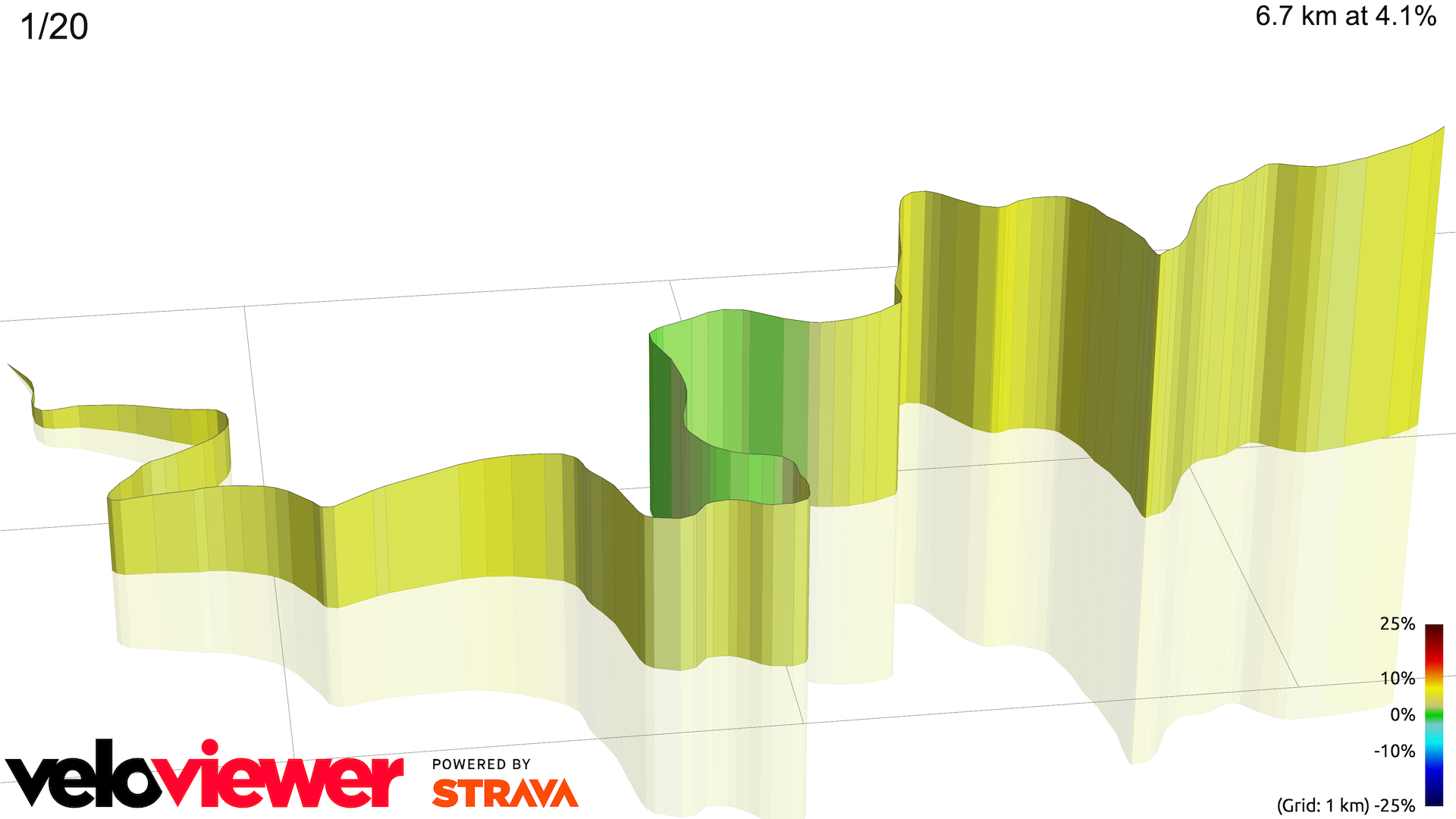
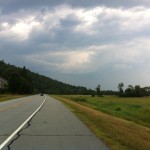
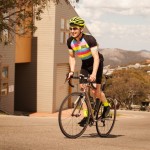
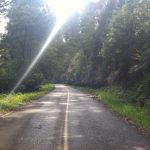
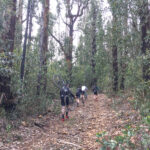
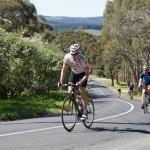
Hi Matt, it sounds like you’re close to a pacing strategy for the climb. While I’ve not ridden the climb, it sounds like a case of still having a bit left in the tank for the final kick. You will lose the most time by being blown up on the steepest parts and conversely gain the most time on those bits. Unless you’re going above 25kmh on the false flat, riding one wattage right on your ftp would work and then lift for the final 5 minutes (and really bury yourself in the final 2mins) where you can get some anaerobic contribution into the finish without negatively affecting yourself. Riding above ftp in the first 10mins of a 16min effort would only be robbing you of the time gains where it matters most. Over the years I’ve chased similar efforts and there are very few if any where a negative split (power wise ie, more watts in second half vs first half) isn’t the quickest way. Best of luck, keep up the good work, crush that time!
Nice one, thanks Chris! I’ll take all this into account!
It is worth looking at the best times with power meters. Power output is basically flat / constant. See Brendan Canty’s PB especially (wonder what type of PM that was, very clean signal), Freddy Overt upped the power in the last few hundred metres and the current 1, 3 & are all pretty even, but were riding as a group (see Matt’s cyclingtips article for that ride). I think you can see evidence of drafting on Liam’s PM across the false flat.
Typos, etc
… current 1, 2 & 4”.
… drafting (swapping turns as discussed in the cyclingtips article)
Yep, that’s a good call. I’ll check that out, thanks!
Great analysis and glad to see the blog come ‘alive’ again, like others it inspired me to get back on the bike a bit more seriously and tackle some of the climbs around town and around the state.
My 1-in-20 goals are far more modest, would be happy to just break the 20 minute barrier – a modest 270w FTP and lugging 89kg uphill makes it more challenging!
I usually end up finishing around the 23 minute mark, taking it a bit easier on the first part, mainly because I always seem to suffer when first hitting any long-ish climb (even after a half-hour warmup riding to The Basin), then push it a bit more on the false-flat, then empty the tank on the last part. Although my latest attempt I went out a bit harder on the first part around 105% FTP and tanked on the last part!
Good luck with the latest project!
Thanks Fraser, much appreciated! Glad to hear you’re enjoying the blog! Hopefully there’s plenty more to come in the weeks and months ahead. 🙂
Without offence, you you considered using a coach / expert to assist with working out power you need to ride to beat your time? I’ve been listening to tri velo podcasts and this would be right up their alley. Otherwise say Stephen lane?
Hey Robin, fair question! I could certainly work with a coach – and might do so at some point – but at the moment I want to see what gains I can make by myself and what I can learn along the way! Thanks for stopping by. 🙂
Hi Matt, I am really enjoying the resurrection of the Climbing Cyclist blog – this is where my cycling journey began – it’s a great site. Being a Melburnian, I share your passion for a 1:2.0 PR. Last year I took 70 seconds off my PR by riding to the following advice. Ride to your FTP until the end of the false flat, then push harder for the last section increasing the pace as you head to the Finnish. Worked for me?
Thanks for the kind words Jamie! Glad you’re enjoying it. That pacing strategy sounds pretty good to me! I might have to give that a try!